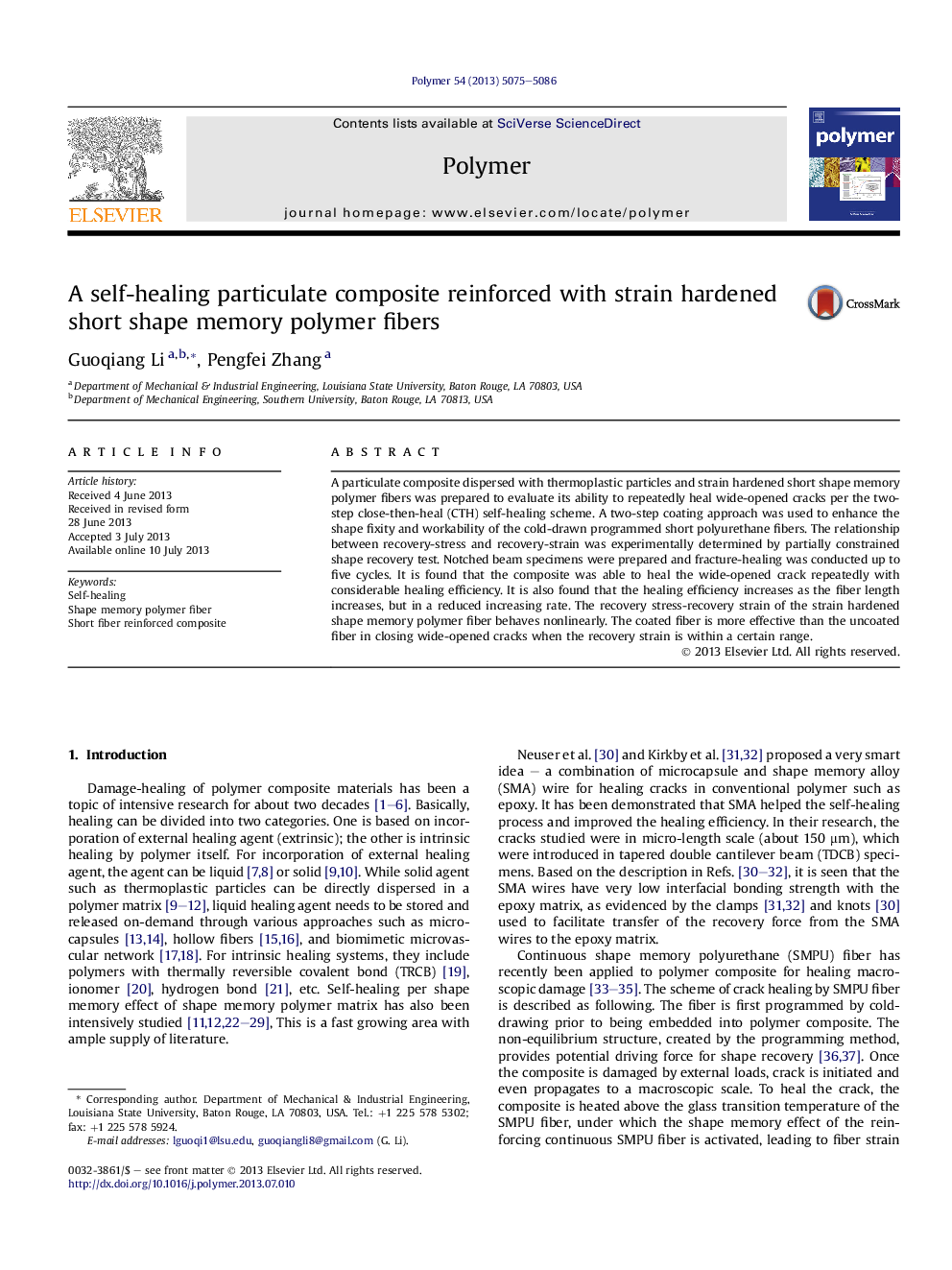| Article ID | Journal | Published Year | Pages | File Type |
|---|---|---|---|---|
| 5181544 | Polymer | 2013 | 12 Pages |
A particulate composite dispersed with thermoplastic particles and strain hardened short shape memory polymer fibers was prepared to evaluate its ability to repeatedly heal wide-opened cracks per the two-step close-then-heal (CTH) self-healing scheme. A two-step coating approach was used to enhance the shape fixity and workability of the cold-drawn programmed short polyurethane fibers. The relationship between recovery-stress and recovery-strain was experimentally determined by partially constrained shape recovery test. Notched beam specimens were prepared and fracture-healing was conducted up to five cycles. It is found that the composite was able to heal the wide-opened crack repeatedly with considerable healing efficiency. It is also found that the healing efficiency increases as the fiber length increases, but in a reduced increasing rate. The recovery stress-recovery strain of the strain hardened shape memory polymer fiber behaves nonlinearly. The coated fiber is more effective than the uncoated fiber in closing wide-opened cracks when the recovery strain is within a certain range.
Graphical abstractFigure optionsDownload full-size imageDownload as PowerPoint slide
